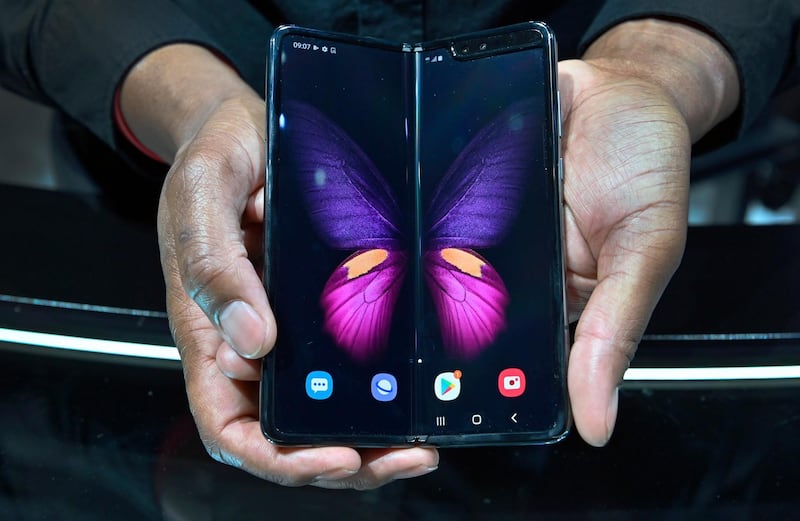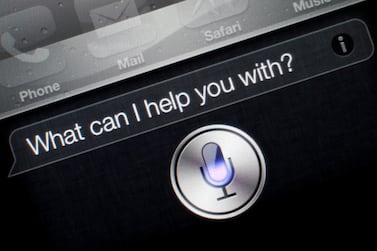The Samsung Galaxy Fold and Z Flip, Huawei Mate X and Motorola Razr: four phones with three things in common.
Firstly, and most notably, they can be folded in half. Secondly, they’re among the most expensive phones ever produced. Thirdly, they’ve been panned for either their under-par performance, unpleasant design, erratic behaviour or literally coming apart at the seams.
Their manufacturers – Samsung, Huawei and Lenovo – are hardly fly-by-night hucksters, so what has gone wrong with foldable smartphones? Are they as bad as reviews suggest, or is the criticism overly harsh? And, most importantly, has the folding screen gimmick blinded us to the most important question: what are these things for?
The magic lurking behind folding phones is the OLED screen. OLEDs have been used for years to make gadgets slimmer and to enable wraparound edges on bezel-free phones. But by replacing the glass surface of a smartphone with a flexible polymer, the whole thing becomes bendable: a novelty in every sense.
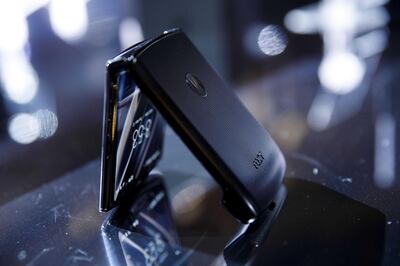
To watch a functioning electronic screen bending is astonishing and some early adopters will find that feature alone to be irresistible. "There will always be consumers who need to have the latest thing," says James Manning Smith, analyst at technology consultants Futuresource. "There's an analogy with Lamborghini cars: very flashy, very cool."
But for the rest of us to be interested, phone manufacturers have to convince us to upgrade, and that's getting more difficult. For years, there was an untapped market for smartphones, and companies such as Apple and Samsung made hay.
But technological progress has stalled; these days, smartphones are all pretty similar. "The mobile industry has essentially run out of steam," says Smith. "Features like notches and bezel-free displays don't really mean anything to consumers any more. So the foldable concept is an attempt to revitalise the market."
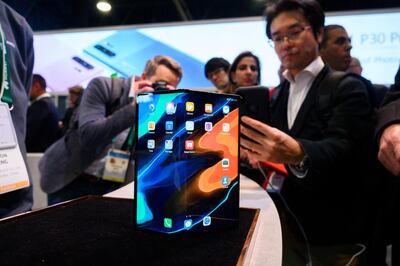
The supposed benefit of foldable smartphones is that bigger screens are squeezed into a smaller spaces. There are two types. The first – such as Samsung's Z Flip and Lenovo's Motorola Razr – folds up to half-size, echoing the "clamshell" design of yesteryear. (Indeed, the Razr takes its name from Motorola's hugely successful clamshell phone from 2005.)
The other, used by Samsung's Galaxy Fold and Huawei's Mate X, lets you fold the phone out to reveal a tablet-sized screen. Naturally, any device that's been folded will be thicker and chunkier, but the unfurled screen is the pay-off, particularly for the tablet-sized products. "It means that working on spreadsheets or watching videos on your phone becomes a more viable option," explains Smith. "But in truth, the use for foldable phones hasn't been found yet."
Aside from their limited benefits, there's a sense that they're not as good as normal smartphones. The first foldable phone was the Royole Flexpai, launched in January last year and described by one reviewer as "charmingly awful". That was soon followed by Samsung's announcement of the Galaxy Fold.
But its screen caused consternation among reviewers, thanks to unsightly bulges and a plastic layer which, despite looking like a screen protector, broke the phone if you peeled it off. The company cancelled the Fold's launch, and an improved version appeared in September. But Dieter Bohn from tech website The Verge still wasn't convinced. "Nobody should buy this phone … this is a science experiment," he said.
Huawei responded with the Mate X, but few people outside China ever got to try it. By restricting its appearance to briefings and press conferences, Huawei could extol its virtues without fear of contradiction. But its successor, the Mate Xs, is due for a global launch this month. By all accounts it's sturdier than the Galaxy Fold, but that sturdiness comes at a price: an astonishing $2,700 (Dh9,915). "It comes back to the Lamborghini analogy," says Smith.
"It won't become a mass market product, and Huawei are never going to recoup their research and development costs. But it's a good marketing ploy – particularly in China, where phones have become status symbols." However, because of the trade ban that prevents Huawei from using Google's Android operating system, apps such as Google Maps and Gmail will be notable by their absence.
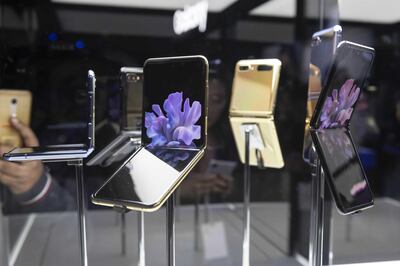
The two clamshell-style foldables, the Razr (Dh5,510) and the Z Flip (Dh5,068), have also been criticised for poor durability. Tech website CNET subjected the Razr to a brutal mechanical test, repeatedly opening and closing it until the hinge broke. (The final tally was 27,000 folds – although Lenovo issued a statement claiming that the test wasn't fair.)
The Z Flip, meanwhile, was heralded by Samsung as the first foldable to have glass screen, describing it as “tough, yet tender”. This inevitably prompted reviewers to test its resilience by stabbing it. Zack Nelson from JerryRigEverything, a YouTube channel devoted to smartphones, did significant damage while doing so. “I don’t know what material this is, but Samsung should definitely not be calling it glass,” he concluded.
Foldables have also been criticised for poor processor power and battery life, but the biggest beef has been about the “crease”. Folding any object inevitably leaves a crease, but for some reason, the world of technology has decided that foldable phones must leave no trace of their folded state.
Reviews have thus tended to describe any visible crease as a design flaw. "I think we've been spoiled with smartphones," Smith says.
"It's incredible where we've come in 15 years, and people don't recognise that. We're very used to a certain product standard, particularly if we're paying $1,500. Having said that, consumers are never going to torture their phones in the way these reviewers have."
These are the first tentative iterations of foldable display technology. But it will eventually change our world. In a few years, we'll be rolling up digital papers to pop into our bags, wearing T-shirts with embedded displays and driving cars with screens curved around the dashboard. In the shorter term, the coronavirus looks set to temporarily slow the pace of change. But that may give smartphone manufacturers time to breathe, get their house in order and ponder how they might make foldable phones truly indispensable.
